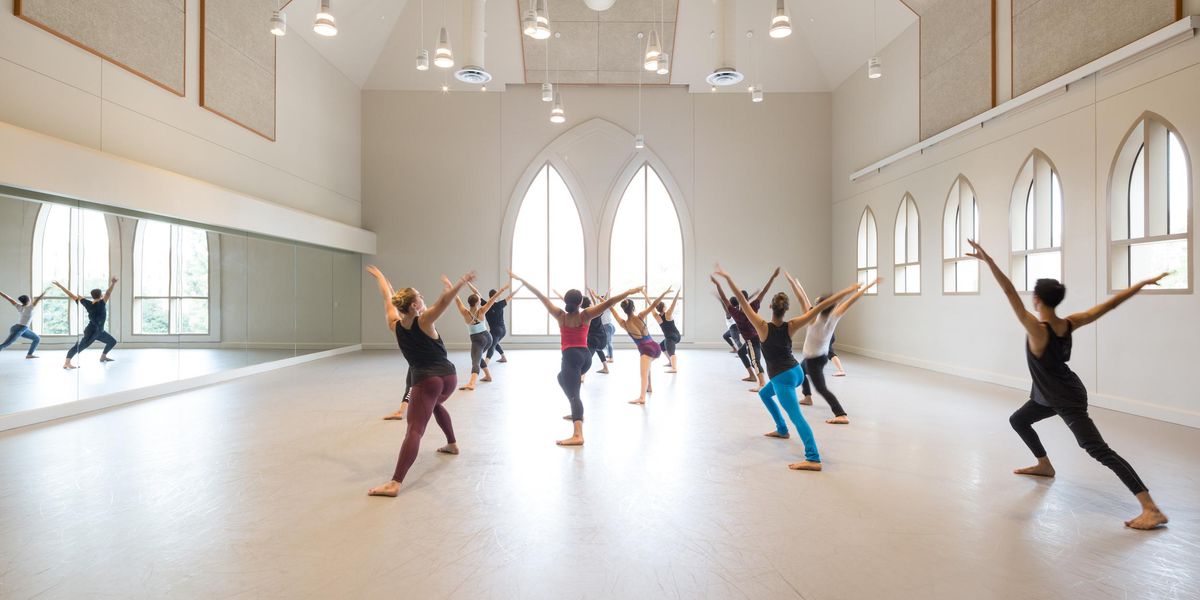Friends with the Floor
Imagine that each body part that comes in contact with the floor is a foot, says teacher Ami Shulman. Jubal Battisti, Courtesy Shulman
Four tips to help you master floorwork.
As humans, we take pride in walking upright, on two legs. But as dancers, we need to feel equally comfortable off our feet, in that slippery space between standing up and lying down. Today, dancers of all kinds are expected to be fluent in the language of floorwork, however disorienting, intimidating or painful it may be. Often, success lies in figuring out what
not to do; the dancer’s instinct to try harder or apply more effort may only hinder you. When you’re on the floor, less is more.
Forget About What It Looks Like
“In so many techniques, we think of dance as being shape-based, as opposed to being about moving your body through space,” says Sarah Chien, founder of Floor Friends, a network of dancers and teachers who gather in New York City to take workshops and classes. “In floorwork, you’re not going to find the answers by copying the shapes. What you need to be asking yourself is, ‘How can my body be accomplishing the task at hand?’ and not, ‘How can I make my body look like the teacher’s?’ ” If you are working in a studio with mirrors, try to ignore them.
Work on Flexibility in the In-Between Places
“It’s not what we think of in terms of balletic flexibility, or flexibility as high extension,” says David Dorfman, artistic director of David Dorfman Dance and chair of the dance department at Connecticut College. To roll smoothly and comfortably between positions on the floor requires many small, specific joints to be flexible, not just in extending away from the body’s core, but in folding toward it. “Folding is essential to floorwork,” echoes Ami Shulman, a contemporary dance instructor who has taught throughout Europe and North America. “You have to know where the joints are, and how they work. It’s important to learn how to make yourself small without holding tension. To sit on your knees and shins, for example, the calf muscles and quadriceps need to relax and spread.”
To gain flexibility in the joints, find a stretching position, like a lunge, and make circular movements around the joint being stretched, starting as small as possible, then gradually spiraling outward. This will help make more pathways along the floor available to you.
David Dorfman Dance. Adam Campos, Courtesy Dorfman
Use Imagery to Inform the Quality of Your Dancing
We spend so much time standing and dancing upright that those habits of coordination are hard to break. Try using your imagination to get through the challenge of making peace with the floor. “Sometimes I’ll use the image of a beach,” says Dorfman, “to encourage the idea that you’re able to fall, as if onto sand. Or the image of falling backward into a pool of water. You have to grow able to transfer those sorts of feelings into the studio environment.” Another trick is to temporarily think of whichever part of your body is in contact with the floor—even if it’s actually your hand, shoulder or hip—as a foot. “This has the power to rewire your intuition,” says Shulman. “I like to think of the floor as a partner,” adds Dorfman.
Learn Other Forms of Movement
Chien and Dorfman both suggest experimenting with dancerly martial arts, such as aikido, capoeira and qigong. If you’re attracted to the daring, athletic movement seen in parkour videos, for example, or in performances by South Korea’s Bereishit Dance Company, look for classes in the Flying Low and Passing Through techniques of Venezuelan dancer David Zambrano, which are becoming popular at festivals like ImPulsTanz. Shulman also recommends researching Bartenieff Fundamentals and the Feldenkrais Method, which can help you understand your preferred movement patterns. From there, you can expand your possibilities and find more choices. “Habits aren’t necessarily bad,” she clarifies, “but they are preferences, which you can override if they’re holding you back.” Break dancing, circus arts and gymnastics could also help you unlock gravity. “It sounds corny to say that floorwork is ‘a way of life,’ ” says Chien, “but it is definitely a paradigm for relating to the world, to other people and to the space around you.”
Ignore the mirrors and explore how it feels, says Sarah Chien. Tess Deselle, Courtesy Chien
Don’t Muscle Your Way Through It
There are no shortcuts in floorwork. Unlike most steps on your feet, not everything can be slowed down when you’re working against gravity. At the same time, pushing yourself to complete the sequence faster won’t always work, either. It takes concentration and a lot of patience to tap into the kinesthetic feedback offered by the floor, and you need to organize your body and mind to make sure you don’t skip any steps.
When practicing a floor phrase, try assigning each action a number. Say that number out loud only once you’ve completed the action, and then move on to the next movement in the phrase. This will help you avoid combining or overlapping pieces that should happen on their own. David Dorfman suggests thinking of the energy and execution of floorwork as a chain reaction, or like dominoes falling one by one.
“Sequential movement patterning will distribute your weight properly,” says Ami Shulman. “Taking shortcuts is not efficient—you’re engaging unnecessary muscular effort. That will make your movement on the floor extremely labored, and you will not be able to use the floor to rest.”
Tip: Wear long sleeves and pants so you can slide and support weight with other body parts, like your shoulders, elbows, shins and back.




